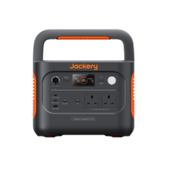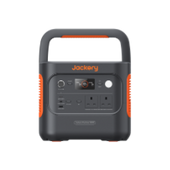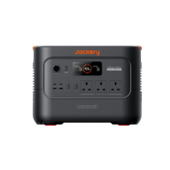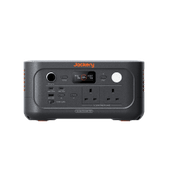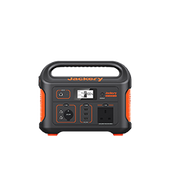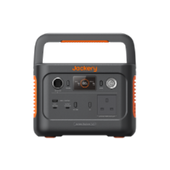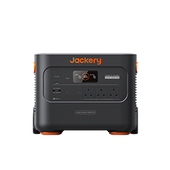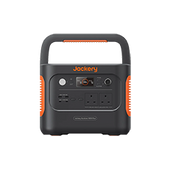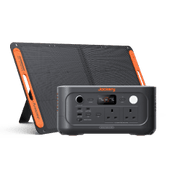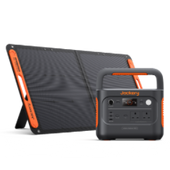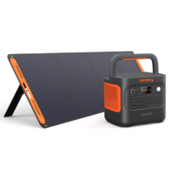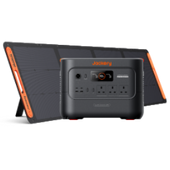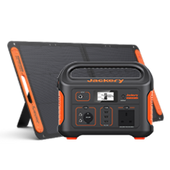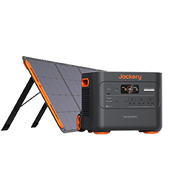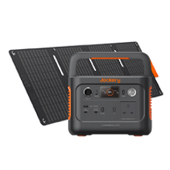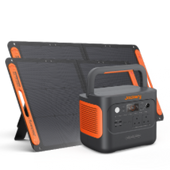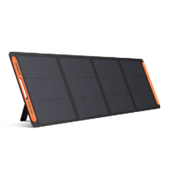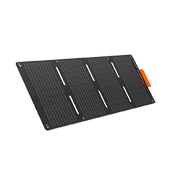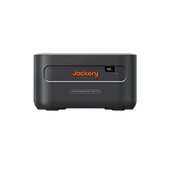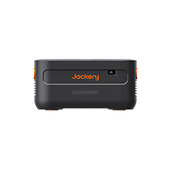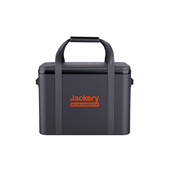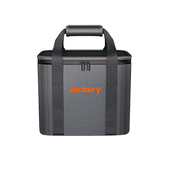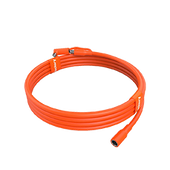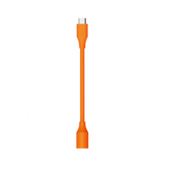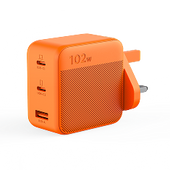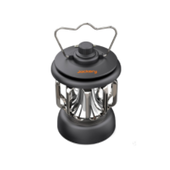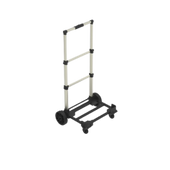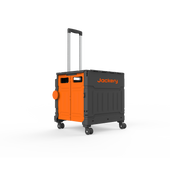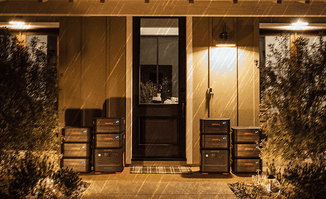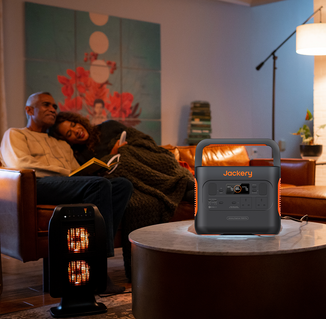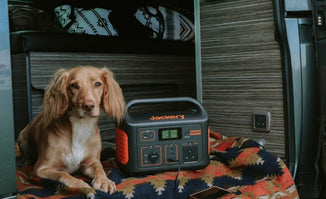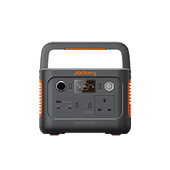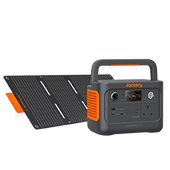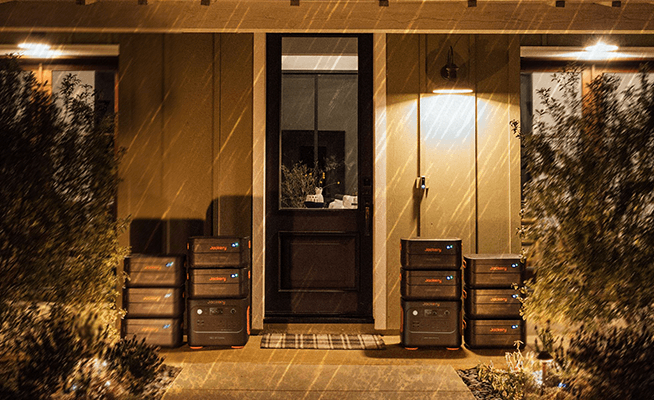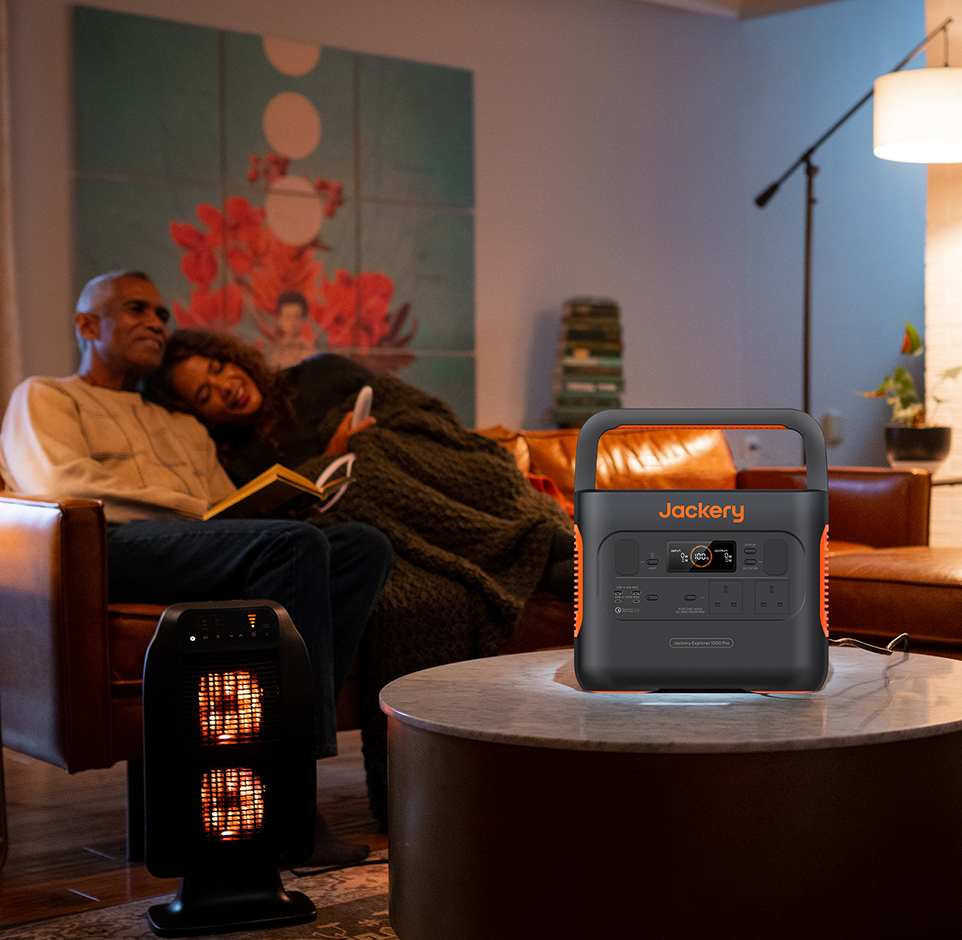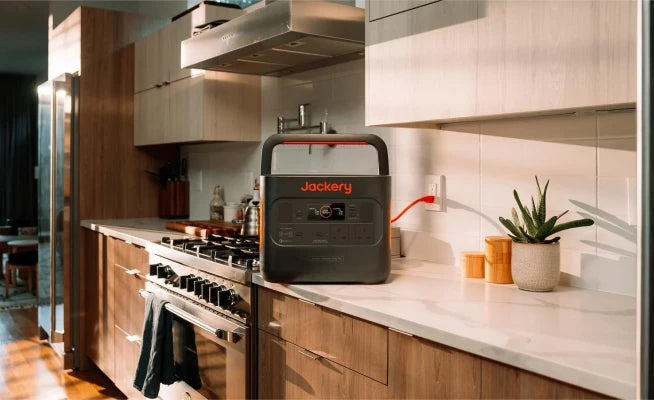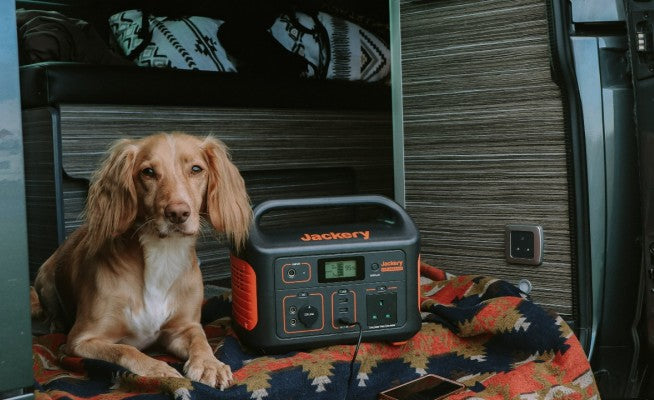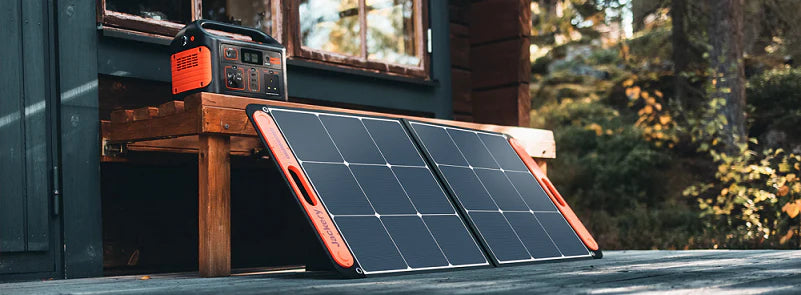Solar batteries are becoming crucial to energy storage systems as renewable energy sources gain popularity. For homes and businesses wishing to store electricity for later use, a 3 kWh battery is a small but effective solution. However, how long can it run on your gadgets? The depth of discharge, battery efficiency, and energy consumption are some variables that affect the response. This article examines how long a 3 kWh battery lasts under various use conditions and offers advice on how to get the most out of it.
Besides, we recommend Jackery Portable Power Stations (including 3000W batteries) to power your household appliances or outdoor devices effectively.
|
Key Takeaways: |
|
- The energy consumption of the connected devices determines the runtime of a 3 kWh battery. - Battery efficiency, depth of discharge (DoD), and energy losses reduce functional capacity; thus, you may not receive 3 kWh. - A 3 kWh battery can power a 300W appliance for around 10 hours or a 1,000W appliance for approximately 3 hours。 - A solar panel system may continuously refill a 3 kWh battery, increasing its energy independence and off-grid or backup power. - A 3 kWh battery is ideal for small-scale energy storage. - We recommend Jackery Explorer 2000 Plus and 3000 v2 with higher power capacities to satisfy all your power needs, whether for home backup or outdoor adventures. |
3000kWh Battery Overview
The basic purpose of solar batteries is to store extra solar energy produced by your solar panels so that you can use it later. Solar panel systems without a solar battery must use the generated electricity immediately, which is a significant disadvantage if you are not at home during that time. However, with a battery, you can use this power when you need it or when your solar panels produce less power. This could include evenings, cold months, and overcast days.
A 3 kWh solar battery can store 3 kWh of electricity. Depending on the energy needs of the connected devices, they can supply 3 kilowatts for one hour or 1 for three hours. Residential solar energy systems employ these batteries to store extra electricity from solar panels during peak sunlight hours.
Storage can be used during low solar production, such as at night or in overcast weather, to increase energy independence and efficiency. Due to drain depth and system inefficiencies, a 3 kWh battery's practical capacity may be slightly lower than its claimed capacity.
How Long Will a 3kWh Battery Last?
There is a limit of three hours for a solar battery with a capacity of three kilowatt-hours (kWh) if you use approximately one thousand watts of power per hour. However, you can extend the battery life span by limiting your electricity use to the minimum necessities and limiting your consumption.
Solar batteries are primarily utilised in residential properties, and two primary types of solar batteries are utilised:
Lithium-ion solar batteries are the most widely utilised solar batteries for residential properties because of their compact size and high power rating. These batteries are also the most prevalent type of solar battery. In spite of this, they are not only pricey but also have a propensity to overheat.
Lead-acid solar batteries have a lower efficiency rating and a shorter lifespan than lithium-ion batteries, even though they have been around longer. On the other hand, they are more affordable than their lithium-ion cousins.

The duration a fully charged 3 kWh solar battery can power your home depends on the energy consumption of the devices or appliances it supports. To calculate the battery's expected lifespan, you can use the following formula:
Operating Time (hours) = Battery Capacity (kWh) ÷ Power Consumption (kW)
For example, if you’re running devices that collectively consume 1 kilowatt (kW), a 3 kWh battery would last approximately:
3 kWh ÷ 1 kW = 3 hours
Conversely, if the combined power consumption is 0.5 kW (500 watts), the same battery would last:
3 kWh ÷ 0.5 kW = 6 hours
It's crucial to remember that real usage can differ depending on several factors, including the drain depth of the battery, efficiency losses, and your household's unique energy needs. To accurately estimate how long a 3 kWh battery would last, you must understand the energy usage trends of your home. For example, a 3 kWh battery would cover 10% of your daily energy demand if your home uses 30 kWh. Therefore, a bigger capacity battery or more batteries may be required for whole-home backup or prolonged use during outages.
What About Depth of Discharge(DoD)?
Depth of Discharge (DoD) is an important consideration when using batteries in conjunction with inverters, solar generators, or backup power systems. It refers to how much of a battery's overall capacity has been utilised before it is recharged. For example, if you have a 100Ah battery and consume 50Ah, your DoD is 50%.
The recommended DoD levels differ amongst battery types. Lead-acid batteries have a safe DoD of roughly 50%, which means they should only be used for half of their total capacity to prevent reducing their lifespan.
In contrast, lithium batteries, such as LiFePO4, can be safely depleted up to 80-90%, resulting in much more useful energy from the same battery size. This distinction has a significant impact on system design. For example, a 12V 100Ah lead-acid battery with 50% DoD gives around 600Wh of useful power, whereas a lithium equivalent at 90% DoD provides 1080Wh. This means that lithium batteries last longer and require fewer batteries to give the same power output.
Consideration of DoD is critical for appropriate battery sizing, effective energy use, and extending the life of your power system.
What Can a 3000W Battery Run in the UK?
What kinds of appliances can be powered by an inverter with a power output of 3000 watts? The following is a comprehensive list of the types of appliances that can be powered by an inverter with a power output of 3000 watts:

Household Appliances
Here is a list of the running watts and their starting watts, provided in brackets if applicable, of some basic household appliances that can be operated on a 3000W battery. As you can see, it can power most of the appliances in your home.
|
Appliances |
Running Watts |
Starting Watts |
|
Microwave |
1000W |
2000W |
|
Coffee Maker |
600W |
1200W |
|
Toaster |
800W |
1500W |
|
Fridge |
500W |
1000W |
|
Washing Machine |
1200W |
2300W |
Power & Construction Tools
3000W batteries are frequently indispensable for DIY projects and construction sites that lack electricity. The power instruments' average running and starting watts listed below are provided in brackets.
Once more, it is crucial to consider the starting wattage when operating any motor-driven power instrument, as the initial surge of power could potentially overload your generator if it is already used for other purposes. Upon their activation, it is feasible to operate numerous instruments simultaneously.
|
Tools |
Running Watts |
Starting Watts |
|
Angle Grinder |
900W |
1800W |
|
Router |
600W |
1500W |
|
Drill |
500W |
1800W |
|
Circular Saw |
1200W |
2400W |
|
Water Pump |
1000W |
300W |
Camping & RV
Another excellent method of utilising a 3000W battery to travel comfortably is camping. The following is a compilation of frequently encountered camping and RV appliances, with the running and starting wattages indicated in brackets, where pertinent.
Indeed, you are free to bring along any other small domestic appliances, such as a crockpot or blender. Observe their rated wattage.
|
Outdoor Appliances |
Running Watts |
Starting Watts |
|
RV Air Conditioner |
900W |
2500W |
|
Portable Space Heater |
750W |
1500W |
|
Portable Fridge |
60W |
120W |
|
Phone Charger |
10W |
/ |
|
Tablet |
10-20W |
/ |
What Size Battery Do You Need for Your House in the UK?
The majority of households have between one and three bedrooms on average, and if this is the case for you, an 8-kilowatt-hour battery will likely be sufficient to meet your requirements. Assessing several essential aspects is necessary to ascertain the size of a solar battery that is suitable for your property in the United Kingdom:

Household Energy Consumption: The typical household in the United Kingdom uses roughly 3,731 kWh of power annually, equivalent to approximately 10.2 kWh daily.
Solar Panel Output: The battery required depends on your solar panels' kilowatts (kW) capacity. A smaller battery size is possible with larger solar panel systems since they produce more energy. On the other hand, larger batteries might be needed to store enough energy in smaller solar panel installations.
Energy Usage Patterns: The amount of required storage capacity can be determined by analysing the timing and manner in which you use electricity.
Peak Demand: Summer peak demand is when your solar panels receive the most sunlight. This is crucial for off-grid residents who utilise solar energy daily and for on-grid residents who use solar power to reduce their energy expenditures at peak grid periods.
Types of Solar Battery: Lead-acid and lithium-ion are the two major solar battery alternatives among the 11 most respectable solar power appliance manufacturers recommending lithium-ion. They last longer than other batteries (especially lead acid) and store more energy despite being smaller and more compact. Lead acid batteries are cheaper but less efficient and last less than lithium-ion ones.
Depth of Discharge: When looking for a solar battery, you may hear the term ‘depth of discharge’ and be asked what you need. Your depth of discharge (DoD) is the maximum battery capacity you expect to use. Knowing this is important because routinely using more than the maximum may drain your battery.
Backup Power Requirements: Consider if you require the battery to supply electricity during a power outage.
An 8 kWh to 12 kWh solar battery is usually advised for an average three-bedroom home in the UK. However, this may change depending on system characteristics and individual energy usage.
To properly evaluate your demands and suggest the best battery size for your home, it is best to speak with a qualified solar installation.
Approximate Solar Battery Size for Various Size of Home:
|
Number of Rooms |
Battery Size (kWh) |
|
One Bedroom |
2 |
|
Two Bedrooms |
4 |
|
Three Bedrooms |
8 |
|
Four Bedrooms |
9.5 |
How Long Can a Solar Battery Power a House?
The length of time a solar battery can power your home in the UK is determined by various factors, including the battery's storage capacity, depth of discharge (DoD), your household's electricity use, and whether solar panels replenish the battery during the outage.
How to Calculate How Long a Solar Battery Can Power Your Home?
To calculate how long a solar battery can power your home, you can use the following formula:
Backup Duration (hours) = Usable Battery Capacity (Wh) / Average Power Consumption (W)
Battery Capacity (kWh) × 1000 = Wh
Usable Capacity = Total Capacity × Depth of Discharge (DoD)
For Example:
Battery: 3kWh capacity
DoD: 90% (for lithium battery)
Usable capacity = 3,000Wh × 0.9 = 2,700Wh
Average household power consumption during outage: 1,500W
Backup Duration = 2,700Wh / 1,500W = 1.8 hours
Your Electricity Needs During A Power Outage
In an outage, not all appliances will function. Below is a typical breakdown of necessary and non-essential electricity usage in UK homes:
Average Power Consumption of Common Appliances:
|
Appliances |
Power Rating (W) |
Usage per Day (Hrs) |
Daily Energy (Wh) |
|
Fridge/Freezer |
150 |
24 |
3,600 |
|
LED Lights (5 x 10W) |
50 |
5 |
250 |
|
Wi-Fi Router |
10 |
24 |
240 |
|
Laptop/Phone Charging |
100 |
4 |
400 |
|
TV |
120 |
3 |
360 |
|
Microwave/Kettle |
1,000-2,000 |
0.5 |
1,000 |
Estimated Total Energy Need (Essential Appliances Only):
|
Category |
Estimated Daily Energy Use (kWh) |
|
Essentials Only |
5.85kWh |
|
Moderate Use |
8.0kWh |
|
High Usage (with AC) |
10–12kWh |
So, if your battery has 3kWh usable capacity, it could:
Power essentials only for about 0.5 days
Power moderate usage for 9 hours
Power high usage for 6-7.2 hours
3KW Solar System Power Output
The advantage of combining solar energy with battery storage is that you essentially establish your own miniature utility to supply electricity to your residence. This is particularly advantageous during extended power disruptions, as the local utility will disable your solar system to prevent the backflow of electricity from injuring workers attempting to repair the grid unless you have battery storage.
However, battery storage enables your system to function autonomously during a power outage. This is referred to as "islanding."
The quantity of energy that a solar panel system can generate during an hour of optimum sunlight is quantified in kilowatts (kW). In optimal circumstances, a 3 kW solar system can generate 3 kWh of electricity per hour. Nevertheless, we generally presume a performance ratio of 75%, as conditions are not always optimal.
In the UK, the average number of optimum sunlight hours per day ranges from 2.5 to 4.5. A solar system's daily output can be calculated by multiplying its capacity by the hours of sunlight and 0.75.
For instance, the daily output of a 3kW solar system that receives 3.5 peak sunlight hours per day can be determined as follows:
In numerous instances, this is sufficient to operate critical electrical systems and recharge a 10 kW battery for extended use. However, the requirements for electricity differ from one residence to another. Consequently, we will examine the energy consumption of several common appliances.
Jackery 3kWh Portable Power Stations Explained
The average UK household energy consumption varies, but typical daily usage can be around 8-12 kWh. A 3kWh battery is unlikely to power an entire household for a long duration. However, it can support some essential appliances to work during a power outage or supplement a solar power system by storing excess energy for later use (peak shaving).
Here, we recommend the Jackery Explorer 2000 Plus and 3000 v2, which have higher power capacities to power low-to-high appliances for a relatively long time. Besides, Get ready to elevate your power game with our exclusive Early Bird Benefits! For a limited time, you can save up to £350 on your purchase and receive a free gift package valued at £327.99, which includes a car charging cable, an Extreme Guard Carrying Bag, and a trolley.
Enjoy financial flexibility with a 3-month interest-free installment plan through PayPal, and rest easy knowing your investment is protected by a hassle-free 5-year warranty. New subscribers also have the exciting chance to win a FREE Explorer 3000 v2, along with a £50 stackable discount and a free trolley.
Jackery Explorer 2000 Plus
The Jackery Explorer 2000 Plus Portable Power Station is a mobile charging device with wheels and retractable handles. It can supply power to 99% of household or outdoor devices and can be augmented from 2kWh to 12kWh with additional battery packs to accommodate the electrical requirements of various equipment.

The Jackery Explorer 2000 Plus Portable Power Station is a mobile charging device with wheels and retractable handles. It can supply power to 99% of household or outdoor devices and can be augmented from 2kWh to 12kWh with additional battery packs to accommodate the electrical requirements of various equipment.
The Jackery 2000 Plus is a versatile, high-capacity charging solution designed to charge various household appliances whenever and wherever required.
You can increase the Jackery Explorer 2000 Plus's capacity if its 2kWh is insufficient. Each Explorer 2000 Plus can add up to five battery packs, increasing the total power to 12 kWh. Although the Jackery Explorer 2000 Plus is a portable power station, it stands out from the competition despite being a practical device.
The following are the running time of using Jackery Explorer 2000 Plus:
|
Appliances |
Running Time |
|
TV (60W) |
27.2-160H |
|
Refrigerator (400W) |
4.1-24H |
|
Coffee Maker (550W) |
3-17.5H |
|
Oven (850W) |
1.9-11.3H |
|
Ceiling Fan (200W) |
8.2-48H |
(*The working hours are only for reference; the actual working hours depend on your usage.)
- Expandable Capacity: The Jackery 2000 Plus run Station can run a variety of heavy load devices with a 3,000 W capacity, such as air conditioners, RVs, and more, meeting all of your power needs with its enormous 2042.8 Wh capacity. Up to five extendable battery packs are supported by the Jackery Explorer 2000 Plus, which has power expanded from 2,000 to 12kWh—voltage to 240V and output to 6000W—to meet all your power needs indoors and out.
- Ultra Fast Charging: Charge directly from the sun or via a wall outlet conveniently, quickly, and worry-free. It took only 2 hours for the Explorer 2000 Plus to fully charge by connecting 6*SolarSaga 200W Solar Panels or via a wall outlet. Additionally, there's no longer a need to worry about power outages—enjoy your time off-grid.
- Smart APP Control: Bluetooth or Wi-Fi can easily control your Explorer 2000 Plus. Using the other App features and monitoring the battery's remaining levels is simpler than before. Numerous sophisticated settings can be altered to suit specific needs, guaranteeing constant energy management.
- Safety First: The Jackery Explorer 2000 Plus is highly temperature resistant, adopting advanced lithium technology to ensure cells operate efficiently and safely. The built-in cooling system further improves heat dissipation efficiency by 30%, and different types of protection, including shock and fire resistance, provide a complete, safe charging experience.
- 3+2 Warranty: We provide our customers with a 3-year warranty for every purchase of Explorer 2000 Plus and an extra 2-year extended warranty (applied automatically if purchased from our Official Website). You must complete a form to claim the extended warranty if purchased from a third-party supplier.
Jackery Explorer 3000 v2
The Jackery Explorer 3000 v2 is a high-capacity portable power station designed for reliable and versatile energy on the go, perfect for RV trips, outdoor adventures, and essential home backup. Boasting a large 3072Wh LiFePO4 battery and a robust 3600W AC output (with a 7200W surge), it can power a wide range of appliances, from refrigerators to power tools.

The following are the running time of using Jackery Explorer 3000 v2:
|
Appliances |
Running Time |
|
TV (60W) |
31.8H |
|
Refrigerator (400W) |
6.2H |
|
Coffee Maker (550W) |
4.6H |
|
Oven (850W) |
3H |
|
Ceiling Fan (200W) |
11.8H |
(*The working hours are only for reference; the actual working hours depend on your usage.)
- Ultimate Solar Power Solution: With a 3072Wh capacity, 3600W continuous, and 7200W surge power, the Jackery 3000 v2 can handle more power-hungry appliances, such as air conditioners, microwaves, water pumps, and even some electric grills, ensuring they run smoothly. Its high output and capacity make it suitable for a vast majority of home devices, offering true versatility.
- Smallest and Lightest 3kWh LFP Power Station: Despite its increased capacity and power, the 3000 v2 is lighter and more compact. Weighing approximately 59.5 lbs (27 kg), it's designed with integrated wheels and a handle for easy transport, making it highly portable for its power class.
- Superior Battery Technology and Lifespan: The 3000 v2 boasts 4000+ cycles to 70% capacity, meaning it can be fully charged and discharged thousands of times before its capacity significantly degrades. This translates to a lifespan of up to 10 years of daily use. LiFePO4 batteries are inherently more stable and less prone to thermal runaway, making them safer for indoor and outdoor use.
- Quiet Charging Mode: Reduces charging power to lower noise levels (below 27 dB), making it ideal for overnight charging or use in sensitive environments. This mode can be enabled or disabled via the app. Charging and discharging are as quiet as in a library, allowing you to study, work, and sleep without being disturbed.
- Multiple Recharging Methods: There are many ways to recharge the Jackery 3000 v2, including Jackery Solar Panels, wall outlets, AC+DC charging and car charging.
|
Recharging Methods of Jackery 3000 v2 |
|
|
AC Wall Outlet |
Charges from 0% to 100% in a remarkable 1.8 hours. |
|
Solar Charging |
Supports up to 1000W of solar input, allowing it to recharge in approximately 3.5 hours with optimal solar panels fully exposed. |
|
Car Charging |
In addition to AC and solar, the device can also be charged via a car adapter (approximately 36 hours). |
|
AC+DC Charging |
Some models support hybrid AC+DC charging (approximately 1.7 hours) or even gas generators, offering flexibility in various scenarios. |
Solar Generators vs. Traditional Generators
When deciding between a solar generator (like the Jackery Solar Generator) and a traditional gasoline-powered generator of similar wattage, several key factors come into play. Each has distinct advantages and disadvantages that make them suitable for different use cases.

Fuel Source & Cost
The solar generator relies on free, renewable sunlight. Once the initial investment in the generator and solar panels is made, there are no ongoing fuel costs. This leads to significant long-term savings.
Whereas, the traditional generator requires gasoline (or sometimes propane/diesel). This means recurring fuel purchases, and fuel prices can fluctuate. Storing fuel also presents safety and logistical challenges.
Environmental Impact
As for solar generator, it has zero emissions, no harmful fumes (like carbon monoxide, nitrogen oxides), and no noise pollution. It's an environmentally friendly choice that reduces your carbon footprint. Safe for indoor use.
However, the traditional one produces exhaust fumes (carbon monoxide, CO2, etc.) and is a significant source of air pollution. Must be used outdoors in well-ventilated areas to prevent carbon monoxide poisoning, making them unsuitable for indoor use.
Noise Level
The solar generator is extremely quiet, often operating at around 22−55dB (about the noise level of a quiet refrigerator or normal conversation). This makes them ideal for residential areas, campsites, RVs, and situations where noise is a concern.
Compared to solar, the traditional generator is very noisy, typically ranging from 60−85dB (similar to a vacuum cleaner or lawnmower). This can be disruptive to neighbors, wildlife, and your own peace of mind.
Maintenance
Solar: Very low maintenance. With no moving parts (engine, carburetor, spark plugs, oil filters), there's no need for oil changes, fuel filter replacements, or complex mechanical upkeep. The primary maintenance is occasional cleaning of solar panels.
Traditional: Requires regular and often significant maintenance, including oil changes (e.g., every 50-100 hours of operation), spark plug replacements, air filter cleaning/replacement, and fuel system checks. This adds to the ongoing cost and effort.
Portability & Setup:
Solar: While the main power station can be heavy (e.g., 27 kg for Jackery 3000 v2), many units are designed with wheels and retractable handles for easier transport. Solar panels are often foldable for portability. Setup is generally plug-and-play.
Traditional: Often heavy and bulky, especially higher wattage models. Requires careful placement due to fumes and noise. Can be more cumbersome to move and set up.
How Much Does a 3kwh Battery Cost In The UK?
A solar battery with a capacity of three kilowatt-hours (kWh) may often be purchased in the United Kingdom for a price that falls anywhere between 2500 and 3500 pounds.
It is essential to remember that these prices often only cover the battery unit; additional costs for inverters, installation, and other system components can increase the total investment. On the other hand, if the purchase of batteries is combined with constructing a new solar panel system, some of these additional costs may be reduced.
In addition, until the year 2027, the government of the United Kingdom will offer a value-added tax rate of zero percent on energy-saving materials, such as solar batteries, which can further reduce the initial investment.
Suppose you are thinking about making such an investment. In that case, it is recommended that you seek the advice of expert installers to receive precise estimates and evaluate the potential return on investment based on your particular energy requirements and patterns of use. Keep in mind that the prices listed above are only averages; the actual cost of a solar battery will depend on several factors:
Manufacturer warranty (longer is better)
Label reputation
Battery size (kWh) (larger batteries cost more)
Lithium-ion batteries cost more than lead-acid.
Cost to install
FAQs
The following are the frequently asked questions about the 3kWh batteries in the UK.
1. What is the range of 3kWh battery?
Device or vehicle energy consumption determines a 3 kWh battery's range. The home battery can power a 100-watt appliance for about 30 hours (3,000 Wh ÷ 100 W = 30 hours). Electric vehicle (EV) efficiency, measured in watt-hours per mile, affects driving range. If an EV uses 300 Wh/mi, a 3 kWh battery can provide 10 miles of range (3,000 Wh ÷ 300 Wh/mi = 10 miles). A 3 kWh battery may be sufficient for short excursions or modest energy consumption but is usually insufficient for more extended travels.
2. How long does a 3kVA battery last?
At 80% load, a typical 3kVA/3kW UPS can provide 5-10 minutes of battery runtime.
3. Is a 5kW battery enough to run a house?
A 5 kW solar battery is small. His capacity is only half of the required minimum battery capacity for the average home. However, if your energy use is low and you simply have a small solar panel, this may be plenty for you.
4. How long does 3kW last?
How long does a 3kW solar system last? f well-maintained, a 3kW system can work for 25 to 30 years. Its efficiency might drop slightly over the years, but a warranty covers it for around 20 to 25 years.
5. How many kW of batteries are needed to run a house?
If you are on the grid, keep in mind that the National Grid is always available if your storage batteries are depleted and you require additional power. As a result, you don't need a large battery as you would if you were off-grid. A typical household will require 10-20 kWh of battery storage for their home. A typical household will require 10-20 kWh of battery storage for their home.
Final Thoughts
The energy requirements of the devices powered by a battery with a capacity of 3 kWh ultimately determine how long the battery will last. t is possible that it will be able to run low-power appliances for several hours, but high-power gadgets will use it much more significantly. t is essential to have a solid understanding of your energy consumption habits to maximise your battery's performance and guarantee that it satisfies your requirements.



